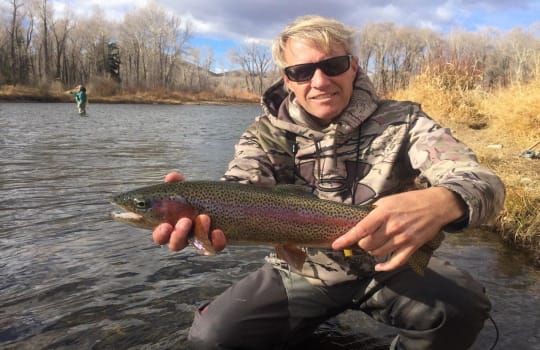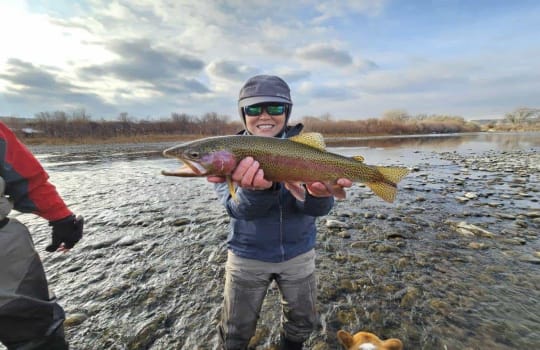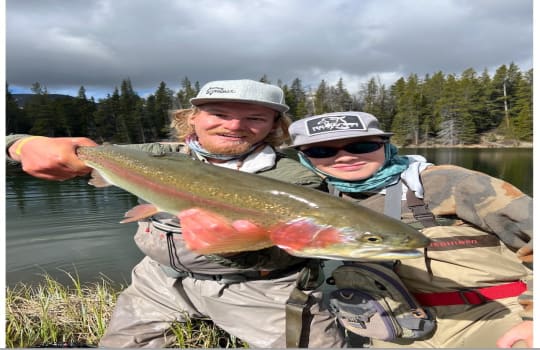THE PULL
by Professional Fly Fishing Guide Ron Pecore
Very often while guiding I find myself talking about the difference between analytical thought and learned behavior. For example, a client might ask me “How smart are trout?” Such questions seem to be about whether or not a trout is able to observe, analyze, and make some sort of judgment call as to whether or not the fly is food or fake. The adjectives often used to describe trout (educated, wary, selective, wise etc.) likely lead to these discussions.
Rather than having higher order thinking capabilities, I describe trout as having a flash-card-mentality. They REACT rather than DECIDE.

Simply as a behavior pattern needed for survival, trout visually identify food sources and opportunistically react with their mouths. So, when the trout identifies a fly via shape, color, size, and/or general impression as food, it reacts. Most commonly, this reaction is based upon successful previous consumption of a similar looking food source. This simple explanation of trout feeding behavior is the fundamental reason I rig my nymph rigs to cover 3 different sizes of food sources.
I call this style of rig: CHEESBURGER – FRENCH FRY – LITTLE PIECE OF CANDY. Though specific fly selections vary seasonally and from river to river, as an example I may build this rig such as: #12 Rubber legs Stone (deluxe burger) – a tan worm in the middle (fry) – and ending with a small size #20 Olive Barr’s Emerger (candy).
With this setup I’m covering three sizes of food groups and should have good success if my setting skills are in tune. So why title this post “The Pull”?
I’ve observed that very soon after a trout has taken a nymph pattern, he feels the pull of the rig being swept downstream. The pull of the current is continuous and will sweep the tippet/hook into the corner of the trout’s jaw and cause a pull from downstream. Such a distinct pulling action in the corner of his mouth is obviously not something the trout experiences when consuming actual insects. At this moment the trout will react to this sensation (sometimes a headshake, sometimes a slight drift in the direction of the pull, sometimes a quick bolt). This is why a very timely hook set downstream is so crucial when fishing nymph rigs.
So the next time your out on the river and fishing a nymph rig, remember to set the hook at the slightest hesitation of your indicator. It could be a trout reacting to the pull.

Want to book a guided fly fishing trip with professional fly fishing guide Ron Pecore or another member of the 5280 Angler Team? Contact us today!
photography courtesy HOODLUM PHOTOGRAPHY. Book James Snyder to photograph your next fly fishing adventure!








